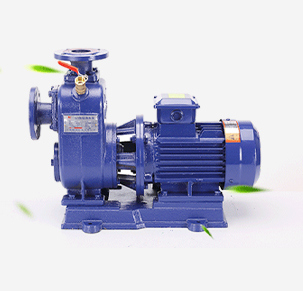Corsican
- Afrikaans
- Albanian
- Amharic
- Arabic
- Armenian
- Azerbaijani
- Basque
- Belarusian
- Bengali
- Bosnian
- Bulgarian
- Catalan
- Cebuano
- Corsican
- Croatian
- Czech
- Danish
- Dutch
- English
- Esperanto
- Estonian
- Finnish
- French
- Frisian
- Galician
- Georgian
- German
- Greek
- Gujarati
- Haitian Creole
- hausa
- hawaiian
- Hebrew
- Hindi
- Miao
- Hungarian
- Icelandic
- igbo
- Indonesian
- irish
- Italian
- Japanese
- Javanese
- Kannada
- kazakh
- Khmer
- Rwandese
- Korean
- Kurdish
- Kyrgyz
- Lao
- Latin
- Latvian
- Lithuanian
- Luxembourgish
- Macedonian
- Malgashi
- Malay
- Malayalam
- Maltese
- Maori
- Marathi
- Mongolian
- Myanmar
- Nepali
- Norwegian
- Norwegian
- Occitan
- Pashto
- Persian
- Polish
- Portuguese
- Punjabi
- Romanian
- Russian
- Samoan
- Scottish Gaelic
- Serbian
- Sesotho
- Shona
- Sindhi
- Sinhala
- Slovak
- Slovenian
- Somali
- Spanish
- Sundanese
- Swahili
- Swedish
- Tagalog
- Tajik
- Tamil
- Tatar
- Telugu
- Thai
- Turkish
- Turkmen
- Ukrainian
- Urdu
- Uighur
- Uzbek
- Vietnamese
- Welsh
- Bantu
- Yiddish
- Yoruba
- Zulu
Telephone: +86 13120555503
Email: frank@cypump.com
Dec . 25, 2024 09:22 Back to list
Innovative Designs and Applications of Slurry Screw Pumps in Industrial Processes
Understanding Slurry Screw Pumps Innovations and Applications
In various industrial processes, the need to transport abrasive and viscous materials is paramount. This is where slurry screw pumps play a significant role. Designed to handle slurry, a mixture of solids and liquids, these pumps provide an efficient solution for industries ranging from mining to wastewater treatment. In this article, we will explore the working principles, advantages, applications, and future trends of slurry screw pumps.
Working Principle of Slurry Screw Pumps
Slurry screw pumps, commonly referred to as auger pumps or screw pumps, utilize a helical screw to move the slurry through a cylindrical housing. The screw’s rotation creates a pressure differential, effectively pulling the slurry into the pump and pushing it along the discharge path. The design of these pumps allows for a continuous flow, making them particularly suited for handling thick and abrasive mixtures.
The materials used in constructing slurry screw pumps are specially selected to withstand harsh conditions. For instance, the impeller and casing materials are often made from high-performance alloys and rubber compounds to resist wear and corrosion. This durability ensures a prolonged service life and minimized maintenance costs.
Advantages of Slurry Screw Pumps
One of the primary advantages of slurry screw pumps is their ability to handle high-solid content slurries. Unlike centrifugal pumps, which can struggle with viscous materials, screw pumps are efficient in transferring slurries that contain a significant percentage of solids. Furthermore, their self-priming capabilities allow them to start operation without needing to fill the pump casing with liquid, facilitating easier service and reducing operational downtime.
Another notable benefit is their versatility. Slurry screw pumps can be used in various capacities, making them suitable for both industrial and municipal applications. Whether it's transporting thick mud in a construction site or transferring sludge in a wastewater treatment facility, these pumps can adapt to a wide range of conditions.
Applications of Slurry Screw Pumps
slurry screw pump

Slurry screw pumps find applications across multiple sectors. In the mining industry, they are vital for transporting slurries of ore, tailings, and other by-products. The ability to manage high-solid contents makes them essential for mineral processing, where efficiency directly impacts profitability.
In the construction sector, these pumps are utilized for dewatering applications, removing excess water and slurry from excavation sites. Their effectiveness minimizes delays in construction projects and enhances site safety.
Municipal wastewater treatment facilities also rely on slurry screw pumps to handle the thick sludge produced during the treatment process. These pumps facilitate the efficient movement of sludge to drying beds or incinerators, ensuring that waste management operates smoothly.
Future Trends in Slurry Screw Pump Technology
As industries continue to evolve, so do the technologies that support them. The development of advanced materials and innovative designs is leading to more efficient, reliable, and eco-friendly slurry screw pumps. Manufacturers are investing in research to improve energy efficiency and reduce the environmental impact of these pumps.
Moreover, the integration of smart technologies and IoT (Internet of Things) solutions is on the rise. By equipping slurry screw pumps with sensors and monitoring systems, operators can achieve real-time data on performance and maintenance needs. This proactive approach can prevent failures and optimize operational efficiency.
Conclusion
Slurry screw pumps are indispensable in many industrial processes, known for their ability to handle complex slurries effectively. With their numerous advantages and diverse applications, they play a crucial role in enhancing productivity across various sectors. As technology advances, we can expect further innovations in slurry screw pumps, ensuring they remain a vital part of future industrial operations. Through continuous improvements, these pumps will contribute significantly to operational efficiency and sustainability in the years to come.
-
Horizontal Split Case Pump with GPT-4 Turbo | High Efficiency
NewsAug.01,2025
-
ISG Series Pipeline Pump - Chi Yuan Pumps | High Efficiency, Durable Design
NewsAug.01,2025
-
Advanced Flue Gas Desulfurization Pump with GPT-4 Turbo | Durable & Efficient
NewsJul.31,2025
-
ISG Series Vertical Pipeline Pump - Chi Yuan Pumps | Advanced Hydraulic Design&Durable Construction
NewsJul.31,2025
-
ISG Series Vertical Pipeline Pump - Chi Yuan Pumps | Energy Efficient & Low Noise
NewsJul.31,2025
-
pipeline pump - Chi Yuan Pumps Co., LTD.|High Efficiency&Low Noise
NewsJul.31,2025










